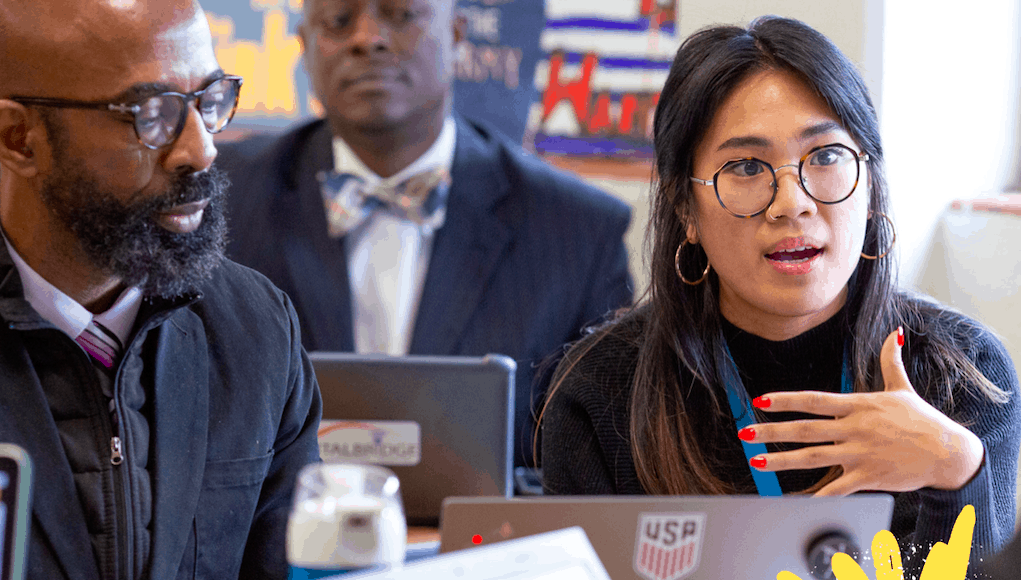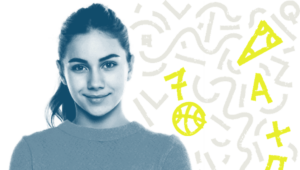It’s Time To Reimagine the K-12 Content Map

By: Antonia Rudenstine
Is it really best to place Geometry between Algebra 1 and 2 in a mathematics curriculum sequence? Why does most US K-12 curriculum exclude Native American history after the Trail of Tears? Why is it that the majority of the K-12 scope and sequence is limited to four core content areas, when the world we live in is far more multi- and interdisciplinary?
At reDesign, these are some of the questions we’ve been asking ourselves (we are certainly not alone, nor the first to ask them). Underlying these questions are deeper and more profound questions about the fundamental purpose of education, and the “best means” of achieving this purpose. Over the past 130 years, a prevalent response to the question of purpose has been that of civic and economic utility: you go to school to become an engaged citizen, and to help build the US economy, so that we can compete in the global economy. Throughout our history, this has often manifested as a commitment to two very big and very racist and classist ideas:
- The metaphor that the US is a “melting pot,” achieved through the cultural assimilation of Indigenous peoples, immigrants, and ethnic, racial and religious “minorities.”
- The notion that the American Dream of social mobility and economic success is accessible to anyone who works hard enough, and therefore anyone who does not achieve the Dream must simply lack work ethic. Or must not value their education. Or must not…you get the idea.
As our team at reDesign continues to converge commitment and action on our antiracism journey, we have identified the K-12 content map as one of the central educational artifacts that continues to uphold these ideals that are deeply rooted in white supremacy ideology, and in the myth of equality it hides behind.
What if the purpose of school were not assimilation, or social reproduction, but liberation? What if the purpose of formal education were to create spaces—what we call learner-centered communities—where young people:
- build competency as they engage with big questions, transferable concepts, and ideas within and across disciplines;
- develop critical consciousness as they critically examine injustices in the world, and explore opportunities to disrupt and transform them; and
- sustain, celebrate, and center the tapestry of cultures and communities to which they belong?
This is our vision at reDesign: All young people thriving in learner-centered communities that cultivate competency, connectedness, and critical consciousness. We stand with so many others who share a vision for a reimagined education system as key a lever for advancing equity.
Our First Step: Reimagine K-12 Disciplinary Maps
Our goal is to redefine the “canon” of K-12 content from a multicultural, antiracist perspective.
Many people have been engaged in this reimagining: some since the beginning of formal schools, and others as recently as this past year. Consider:
- Black and Indigenous communities and families that have adapted or withdrawn from the formal education system in order to ensure that their children learn about their own culture, history, and frames of thinking;
- pods that launched during the pandemic as families decided not to engage in district remote learning plans; and
- independent and charter schools, and some district schools, whose more trusting accountability systems make it possible to develop an antiracist, inclusive curriculum.
In this same spirit of centering the lived experiences, identities, and needs of young people, reDesign is convening 250 content experts across 25 disciplines, with diverse backgrounds, funds of knowledge, perspectives, and geolocations. An expert might be an architect or a 2nd grade teacher of reading. Or perhaps a physicist or computer scientist, a teacher of algebra, a poet, a doctor, or an antiracist community organizer.
Experts will convene to reimagine the “canon” of K-12 content, centering inclusion and antiracism, in the articulation of key concepts, questions and ideas that are central to making meaning of each of the initially identified content areas (additional content areas will be included in years 2 and 3 of this project). Together, we’ll let go of the long list of Google-able facts, formulas, and phenomena that make up so much of the K–12 scope and sequence, and we’ll prioritize disciplinary concepts and inclusive funds of knowledge that are organized in ways that are in-sync with how the brain actually learns, and how the adult world actually works.
It’s a big bite. To our knowledge, it has not been done before: The committees that developed the 3 current National Content Standards and Frameworks (The Common Core State Standards, C3 Framework for Social Studies, and the Framework for K-12 Science Education) included 61 participants. Of these,
- 82% were white-presenting;
- 79% were part of higher education/academia; and
- only 4 Asian, 4 Black, and 3 Latino members participated, with no indigenous representation.
Given this, we enter the work as collaborators and learners engaging in a process. There is no paved road to follow here.
Our Approach
The ten experts from each of the 25 disciplines will convene for a week-long virtual design studio this summer. We’ll provide the rules of engagement, and then place our trust in the expertise of our participants to self-organize as they work to draft a concept map. Each studio will be loosely facilitated and supported by folks trained in antiracism and inclusion to help participants work through conflicts, identify biases, and ensure all voices are heard.
What Happens Next?
We’ll share the results, ask for feedback, include more content areas, and revise.
We believe in iteration, and we believe in a collective and inclusive process to take the work forward. We look forward to publicly sharing the first draft of the content maps this summer, and engaging a broader audience with new perspectives for review and comment.
For us, the content map has a very utilitarian value and also speaks to our personal commitments. Inside of reDesign, we’ll use the new K-12 content map to develop inclusive, antiracist, competency-based curriculum that learners in our lab school, to be launched in 2022/2023, will be able to explore.
Out in the world, our hope is that the new content map helps build the case that a distilled, concept-based orientation to disciplinary content, and a much more flexible, culturally inclusive, and explicitly antiracist approach to reimagining the canon, is better for all of us. It moves us beyond our education system’s industrial blueprint of standardization (assimilation), linearity, and compliance. And it brings us one step closer to living out what the incredible Nikole Hannah-Jones often describes as our nation’s “majestic ideals” of justice and liberty for all.
For more, see:
- Students and Equity at the Heart of School Redesign
- Redesigning School: Six Key Pillars From Six of the Most Innovative Schools and Programs
- Time to Redesign is NOW
Antonia Rudenstine is the Founder & Creative Director of reDesign.
Stay in-the-know with innovations in learning by signing up for the weekly Smart Update.





Scottie Seawell
Might I recommend a book that shares a framework to help participants consider the “majestic ideals” of justice and liberty for all? Preserving the Public in Public Schools by Phil Boyle and Del Burns(2012) Thank you and best wishes on the redesign. Can’t come soon enough!